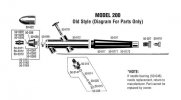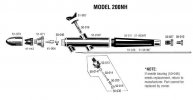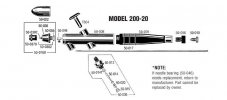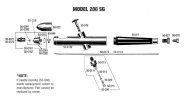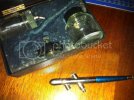fubar
New Member
- Joined
- Nov 10, 2011
- Messages
- 502
Hey guys.
While i was rummaging in my garage i found an old Badger 200 airbrush that i'm guessing someone in the long distant past (15+ years) gave me for free. I know absolutly zero about airbrushes and this thing has no instructions that i can find. It looks in good condition but i was wondering do the parts in these things degrade over time? I'm guessing there are O-rings and seals of some sort in it, what are the parts most likely to fail due to age and not being used at all?
I would really love to try it out as at the moment i brush everything, but dont want to waste money and time if age has most likely killed it. lol
Also any websites that may have instructions or tutorials on how to use the thing. lol
Thanks in advance for any help.
TTFN Matt
P.S. Just incase it does work can anyone recommend a good value for money compressor?
While i was rummaging in my garage i found an old Badger 200 airbrush that i'm guessing someone in the long distant past (15+ years) gave me for free. I know absolutly zero about airbrushes and this thing has no instructions that i can find. It looks in good condition but i was wondering do the parts in these things degrade over time? I'm guessing there are O-rings and seals of some sort in it, what are the parts most likely to fail due to age and not being used at all?
I would really love to try it out as at the moment i brush everything, but dont want to waste money and time if age has most likely killed it. lol
Also any websites that may have instructions or tutorials on how to use the thing. lol
Thanks in advance for any help.
TTFN Matt
P.S. Just incase it does work can anyone recommend a good value for money compressor?

